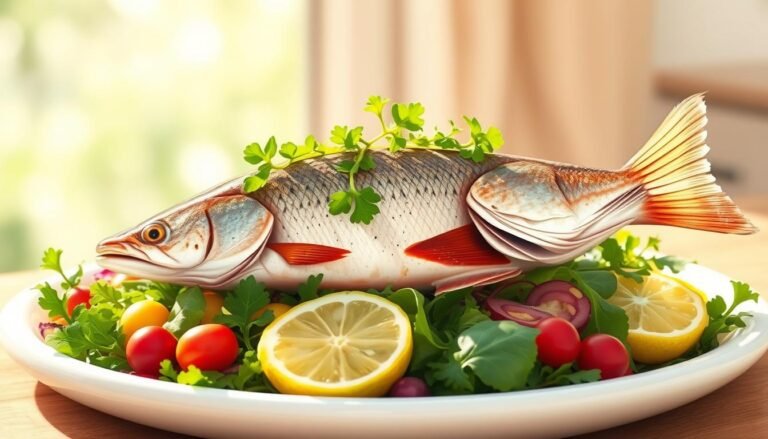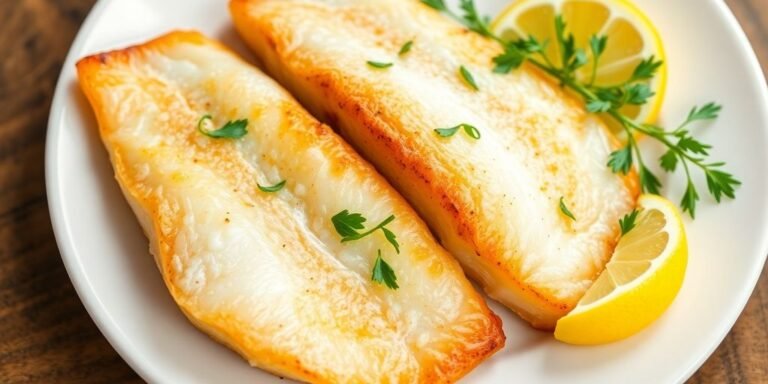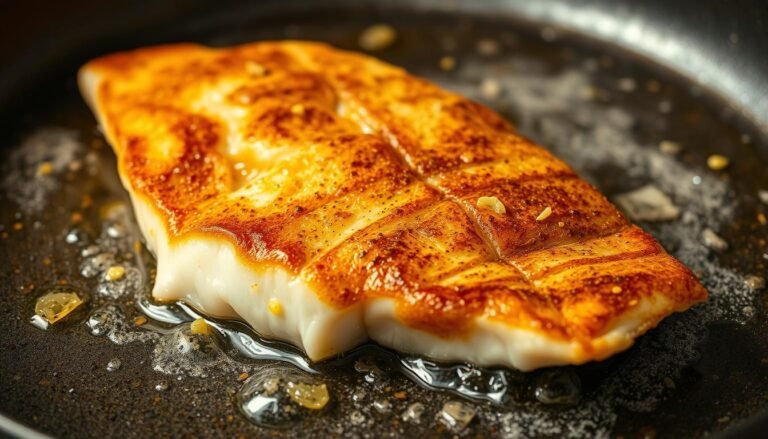Right then, let’s talk about cooking a saddletail snapper. It’s a pretty straightforward affair, really. We’ll walk you through picking a good one, getting it prepped, stuffing it with some tasty bits, seasoning it up right, and then getting it cooked to perfection. It’s not rocket science, and by the end of this, you’ll have a cracking meal that looks like it came straight from a fancy restaurant, but you made it yourself. So, grab your apron, and let’s get this saddletail snapper recipe sorted.
Key Takeaways
- Choosing the right saddletail snapper is key for a great meal; look for firm flesh and a fresh sea smell.
- Proper cleaning and scaling will make cooking and eating your saddletail snapper a breeze.
- Stuffing the cavity with herbs and lemon adds a lovely flavour to the fish.
- A simple dill and garlic butter is a classic pairing that really makes the saddletail snapper shine.
- Baking the whole fish is an easy method that keeps the saddletail snapper moist and delicious.
Selecting Your Saddletail Snapper
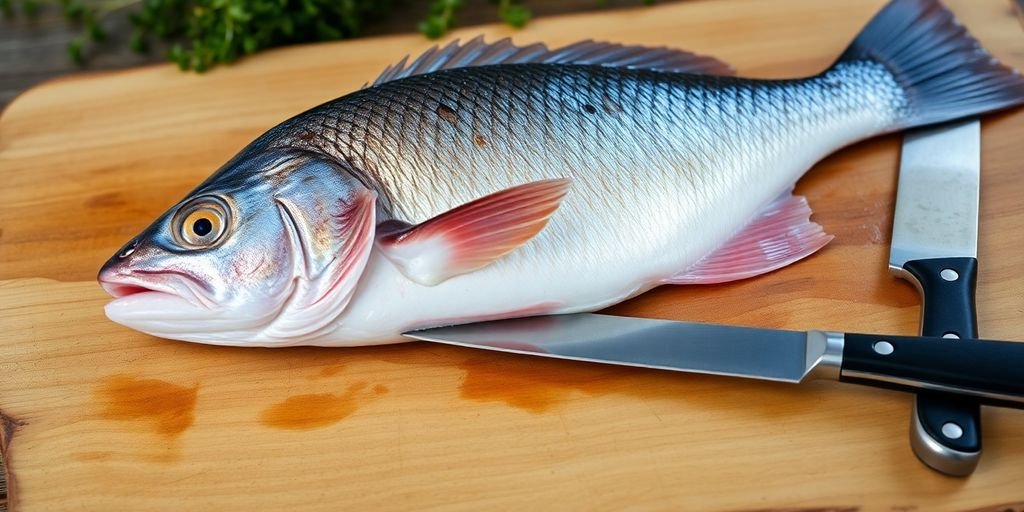
Choosing the right fish is the first step to a ripper meal. When you’re after a good saddletail snapper, it’s worth knowing a bit about what makes a snapper a snapper, and what to look for at the fishmonger.
Understanding Different Snapper Varieties
There are heaps of snapper types out there, over 100 in fact, and they all have their own quirks. For instance, the American Red Snapper is a top pick for chefs, known for its sweet, nutty flavour from its diet. Then you’ve got the Yellowtail Snapper, a bit smaller but really versatile with its firm, white flesh and mild taste. Mangrove Snappers, or ‘grays’, are similar in size and have a slightly sweet flavour, good for ceviche or tacos. Mutton Snappers are bigger, with a rich, sweet-and-savory taste that’s great grilled or in stews. Vermillion Snappers, or ‘beeliners’, are smaller and have a delicate flesh, perfect for baking or soups. Knowing these differences helps you pick the best fish for your recipe. It’s important to get genuine snapper, as sometimes other fish like tilapia or rockfish get passed off as the real deal.
Read Also: Hearty Barramundi Soup: Nourishing Recipe – 3 Variations
Characteristics of Ideal Snapper for Cooking
When you’re picking out a snapper, look for a few key things. The fish should smell fresh, like the sea, not fishy or off. Its eyes should be clear and bright, not cloudy or sunken. The gills should be a nice, healthy red colour. The flesh itself should be firm and spring back when you gently press it. A good snapper generally has a mildly sweet flavour and a firm, moist texture, which makes it a winner for most cooking methods. You want a fish that feels solid, not mushy.
Sourcing Fresh, Quality Snapper
Getting your hands on good quality snapper is pretty straightforward if you know where to look. Your local fish market is usually your best bet. Chat with the fishmonger; they’re usually happy to tell you where their fish came from and when it was caught. If you’re buying from a supermarket, check the ‘packed on’ or ‘use by’ dates. Look for fish that’s displayed on a thick bed of ice. It’s also worth considering where the snapper comes from. Many snappers are wild-caught using methods like longlining, which is a pretty standard way to catch them. Some snapper is farmed, but wild-caught is often preferred for flavour. If sustainability is a concern for you, ask about that too. We’re committed to providing seafood exclusively from well-managed wild fisheries and sustainable producers.
Preparing the Saddletail Snapper
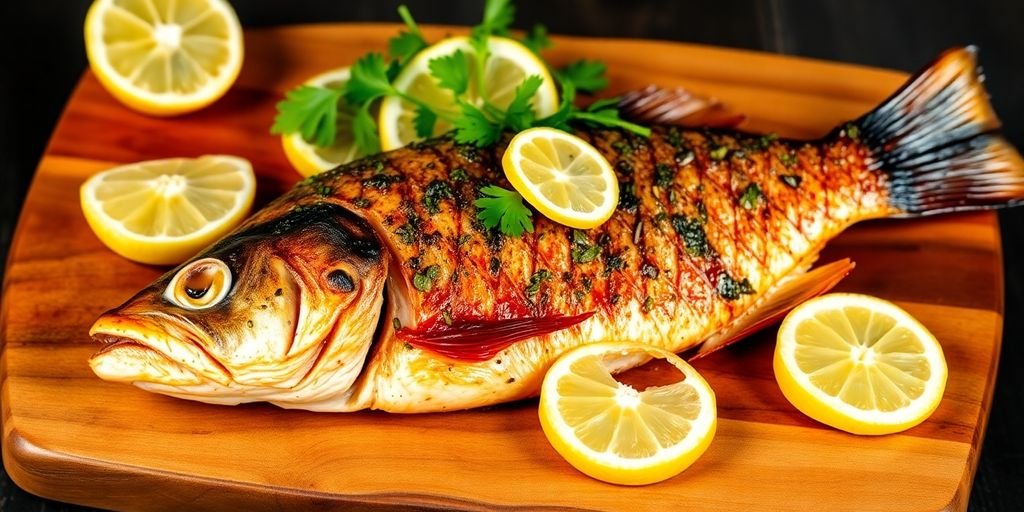
Read Also: Snapper Rig Port Phillip Bay: Setup Guide for Big Catches
Cleaning and Scaling the Fish
First things first, you’ll want to get your snapper ready for cooking. If you’ve bought it whole, it’ll need a good clean. Start by rinsing the fish under cold running water, inside and out. Then, it’s time to tackle the scales. You can use the back of a knife or a fish scaler for this. Hold the fish firmly and scrape from the tail towards the head, making sure to get both sides. Don’t forget to do this over a sink or a bin to catch all those scales. Once scaled, give it another rinse.
Optional Fin Trimming for Presentation
While not strictly necessary for the cooking process, trimming the fins can make your snapper look a bit tidier on the plate. You can use sharp kitchen scissors or a filleting knife to snip off the dorsal (top) fin, pectoral fins (on the sides), and the tail fin. This is purely for aesthetics, so if you’re not fussed about presentation, you can skip this step.
Making Essential Flesh Slits
To help the heat penetrate the fish evenly and allow seasonings to get right into the flesh, it’s a good idea to make a few shallow cuts along the sides of the fish. Aim for about three or four slits on each side, going about halfway through the thickness of the fillet. This is particularly helpful when cooking the fish whole, as it ensures the thicker parts cook through without the thinner parts drying out. It also helps the fish cook a bit faster, which is always a bonus. You can see how this is done in some saddle-tail snapper recipes.
These simple preparation steps will set you up for a much more enjoyable cooking experience and a tastier final dish. Taking a little extra time here really makes a difference.
Stuffing the Saddletail Snapper
Now that your snapper is prepped and ready, it’s time to think about stuffing. This is where you can really add some extra flavour right into the heart of the fish. The cavity, that’s the space where the guts used to be, is perfect for holding a mix of tasty ingredients that will steam and infuse into the flesh as it cooks.
Classic Aromatics for Cavity Stuffing
For a really classic flavour, you can’t go wrong with some simple aromatics. Think fresh herbs like parsley and dill, some thinly sliced garlic, and a few slices of lemon. These ingredients are pretty standard for a reason – they just work so well with fish, giving it a lovely fresh scent and taste.
Preparing Lemon and Herb Fillings
When you’re getting your filling ready, make sure the herbs are fresh and the garlic is sliced thinly. For the lemon, just a few slices are usually enough. You want these flavours to be present but not overpowering. It’s all about complementing the natural taste of the snapper.
Securing the Stuffing with Twine
Once you’ve got your filling packed in, you might want to tie the fish up a bit. Using a few lengths of kitchen twine tied around the fish at intervals helps keep everything tucked inside. It also stops the belly flaps from curling outwards during cooking, which makes for a neater presentation. Don’t stress about fancy knots; just a few simple ties will do the job nicely.
Seasoning and Coating the Fish
Now that your snapper is prepped and ready for its flavour journey, it’s time to get the seasoning just right. This step is where we build the foundation for that delicious crust and ensure the fish is seasoned all the way through.
Applying Salt, Pepper, and Olive Oil
First things first, give your fish a good drizzle of olive oil. Don’t be shy with it; you want enough to coat the entire surface. Then, season generously with salt and freshly cracked black pepper. Make sure to rub the oil and seasonings all over the fish, getting into those little slashes you made earlier. This is where a lot of the flavour really sinks in. Getting the seasoning into those cuts is key for a flavourful result.
Creating a Dill Garlic Butter
While the fish is getting its initial seasoning, let’s whip up a simple but incredibly tasty dill garlic butter. You’ll need some butter, a couple of cloves of minced garlic, and a good handful of fresh dill, chopped. Melt the butter in a small saucepan over medium heat. Once it’s melted, toss in the garlic and cook for about a minute, just until it’s fragrant – you don’t want it to burn. Take it off the heat and stir in the fresh dill. This butter is going to be amazing drizzled over the fish later, or even used as a dipping sauce. It’s a classic pairing for a reason, and you can find more ideas for sauces on fish recipes.
Ensuring Even Seasoning Coverage
Take a moment to really work the salt, pepper, and olive oil into every nook and cranny of the fish. Pay special attention to the belly cavity and those diagonal slashes. If you’ve tied the fish, make sure the string doesn’t prevent the seasoning from reaching the flesh. A good coating here means every bite will be well-flavoured. It’s not just about the outside; we want flavour throughout the entire fish.
Cooking Your Saddletail Snapper
Right then, let’s get this beauty into the oven. Baking a whole fish like our saddletail snapper is a top way to keep it moist and full of flavour. It’s not complicated, honestly.
Optimal Oven Temperature and Time
For a whole snapper around 800g, you’re generally looking at an oven temp of about 200°C (400°F). As for time, it really depends on the size and thickness of your fish. A good starting point is around 20-25 minutes for that 800g size. It’s always better to check a bit early than to overcook it, right? You can always pop it back in for a few more minutes if needed. Remember, different shapes and sizes will cook a bit differently, so don’t treat the timing as gospel.
Baking Whole Fish for Juiciness
Baking the fish whole is the secret weapon for keeping it juicy. All those natural juices stay locked inside, basting the flesh as it cooks. It’s a pretty simple concept, but it makes a massive difference to the final result. You get that tender, flaky texture that’s just spot on. It’s easy enough for a weeknight, but looks impressive enough for guests too. If you’re keen to try other fish cooked whole, there are plenty of good options out there.
Checking for Doneness
So, how do you know when it’s ready? The easiest way is to gently poke the thickest part of the fish with a fork or skewer. If the flesh flakes away easily from the bone, it’s done. You can also check the eye; it should be opaque and white, not clear. Another good sign is when the flesh near the backbone is opaque and flakes easily. Don’t be afraid to check a couple of spots. If you’re unsure, it’s always best to check a bit earlier and give it a few more minutes. You want that perfect flaky texture, not dry, crumbly fish. For a bit of extra flavour, you could even try grilling saddle-tail snapper before finishing it in the oven.
Serving Your Saddletail Snapper
Now for the best part – enjoying your beautifully cooked Saddletail Snapper! The way you present and serve this fish can really make it a showstopper for any meal. We’ve got a few ideas to help you get the most out of your catch.
Classic Dill Garlic Butter Sauce Pairing
This sauce is a natural fit for the Saddletail Snapper. It’s simple to whip up and complements the fish’s flavour without overpowering it. You’ll want about 100 grams of unsalted butter, softened, mixed with two cloves of minced garlic, a tablespoon of fresh chopped dill, a squeeze of lemon juice, and a pinch of salt and pepper. Gently warm this mixture before serving. Drizzling this over the hot fish just before it hits the table is a game-changer.
Alternative Sauce Suggestions
While the dill garlic butter is a classic, don’t be afraid to experiment. A simple lemon-caper sauce works wonders, offering a bit of tang. For something a bit richer, a creamy white wine sauce can be lovely. If you’re aiming for a lighter touch, a fresh salsa verde or a simple vinaigrette with fresh herbs would also be fantastic. Remember, the goal is to complement, not compete with, the flavour of the snapper. You might even find you prefer a simple squeeze of fresh lemon, which is perfectly fine too. For a quick weeknight meal, consider serving it with Air Fryer Snapper.
Presentation Tips for a Centrepiece Meal
To really make your Saddletail Snapper shine, think about how you plate it. If you cooked it whole, placing it on a large platter garnished with fresh lemon wedges, sprigs of dill, and perhaps some colourful roasted vegetables like bell peppers and cherry tomatoes makes for a stunning visual. You can also serve it family-style, allowing everyone to help themselves. If you’ve filleted the fish, arrange the fillets neatly on individual plates, perhaps with a side of steamed greens or a fresh salad. The key is to make the fish the star of the show.
Wrapping Up Your Saddletail Snapper Adventure
So there you have it, a straightforward way to get a delicious saddletail snapper meal on the table. We’ve gone through the prep, the cooking, and hopefully, you’ve ended up with a fantastic feed. Snapper, in general, is a pretty forgiving fish to cook, and this method really lets its natural flavour shine through. Whether you’re a seasoned cook or just starting out, giving this recipe a go is definitely worth it. Enjoy your tasty catch!
Frequently Asked Questions
How do I pick a good saddletail snapper to cook?
You’ll want to pick a fish that’s nice and plump, with clear eyes and bright red gills. If you’re buying it whole, it should feel firm to the touch. Snapper generally tastes a bit sweet and mild, with a firm texture that’s not too oily. It’s a pretty versatile fish, so it works well with lots of different flavours.
Can I cook the saddletail snapper whole?
Sure can! Snapper is a great fish for baking whole. It keeps the flesh really moist and tasty. You just stuff it with some herbs and lemon, season it up, and pop it in the oven. It looks pretty impressive on the table too!
What’s the best way to stuff and season the snapper?
Stuffing the fish cavity with things like fresh dill, parsley, garlic, and lemon slices adds heaps of flavour as it cooks. You can also mix up a yummy butter with dill and garlic to rub all over it. It makes the skin nice and crispy, and the inside super tasty.
How long does it take to cook a saddletail snapper?
For a whole snapper about 800g, you’re looking at around 20 minutes in a hot oven, maybe 200°C. But this can change depending on the size of your fish. The best way to tell if it’s done is to gently flake the flesh with a fork near the thickest part. If it flakes easily and looks opaque, it’s ready to go.
What kind of sauce goes well with saddletail snapper?
A classic pairing is a simple dill and garlic butter sauce. It’s super easy to make and tastes brilliant with the fish. Other good options include a lemon brown butter sauce, a fresh salsa verde, or even a creamy mushroom sauce if you fancy something a bit richer.
Is saddletail snapper healthy?
Snapper is a fantastic source of protein and is pretty low in calories. It’s also got omega-3 fatty acids, which are good for your heart and brain. So, it’s a healthy choice all round, especially when you’re not frying it up in heaps of oil!
